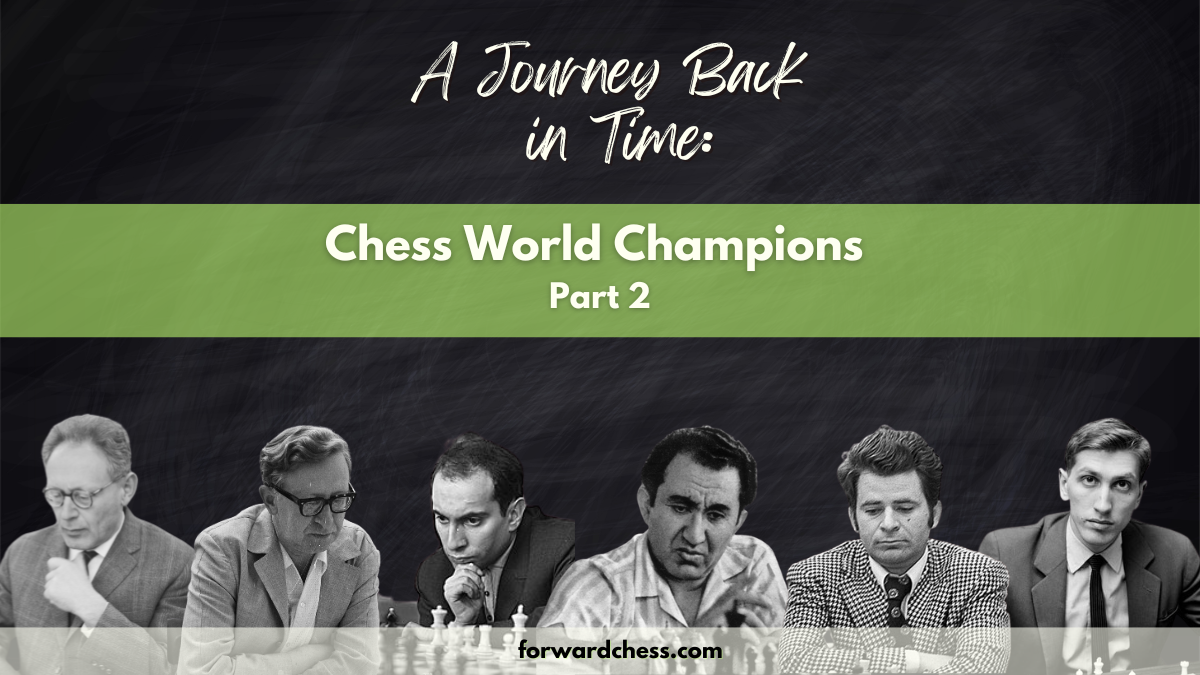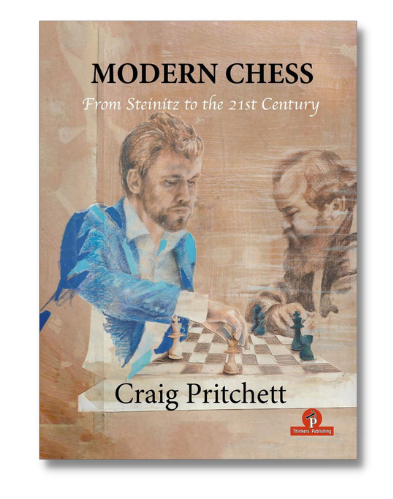In Part Two of learning about Chess World Champions, we take a look at the Soviet Dominance on the World Championship throne, starting with Mikhail Botvinnik up until its disruption by Bobby Fischer:
Mikhail Botvinnik
1948-1957
1958-1960
1961-1963
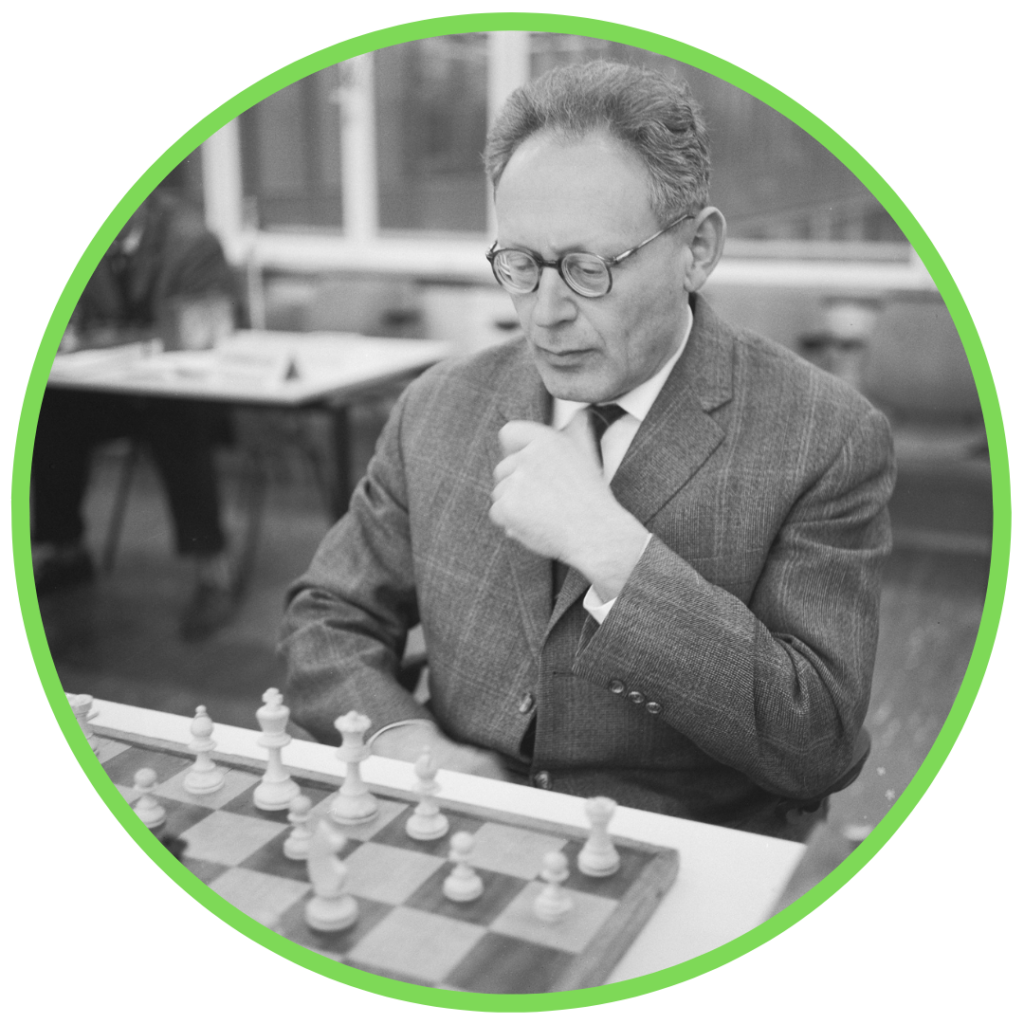
Botvinnik is considered to be one of the best players and influencers in chess, not only due to his long reign as World Champion, but also his mentorship and training of top players including the likes of Garry Kasparov, Anatoly Karpov, and Vladimir Kramnik. It is for this reason, and the fact that he paved the way for Soviet dominance in chess, that he was (and still is) known as the father of the Soviet Chess School.
His style can be categorized as scientific and meticulous, with a big emphasis on theoretical research which gave him an edge in the opening phase. Most probably his own harshest critic, Botvinnik would deeply study his own games and therefore understood the weaknesses and strengths in his play. Interestingly, he considered himself to be a universal player who could fine-tune his style according to who he was playing against.
By the late 1930s, it was clear that Botvinnik was ready to challenge Alekhine (the then World Champion) for the throne. However, due to multiple factors such as Alekhine’s refusal to play, and the outbreak of World War II, it would take many more years for this challenge to be realized. Finally, after the war, an agreement was made and an Alekhine-Botvinnik match was scheduled to take place. However, matters were only further complicated due to Alekhine’s unexpected death in 1946. As chaos and uncertainty unraveled, the chess world needed a champion.
Then, in 1948, a World Championship Match Tournament was set up between 5 of the top players at the time – Botvinnik, Euwe, Keres, Reshevsky, and Smyslov. Botvinnik triumphed in the tournament, winning all four matches against his esteemed opponents. He would go on to keep the title until 1963, losing it only briefly to Smyslov and Tal.
Here is a game annotated in Modern Chess: From Steinitz to the 21st Century between Botvinnik and the former World Champion, Max Euwe:
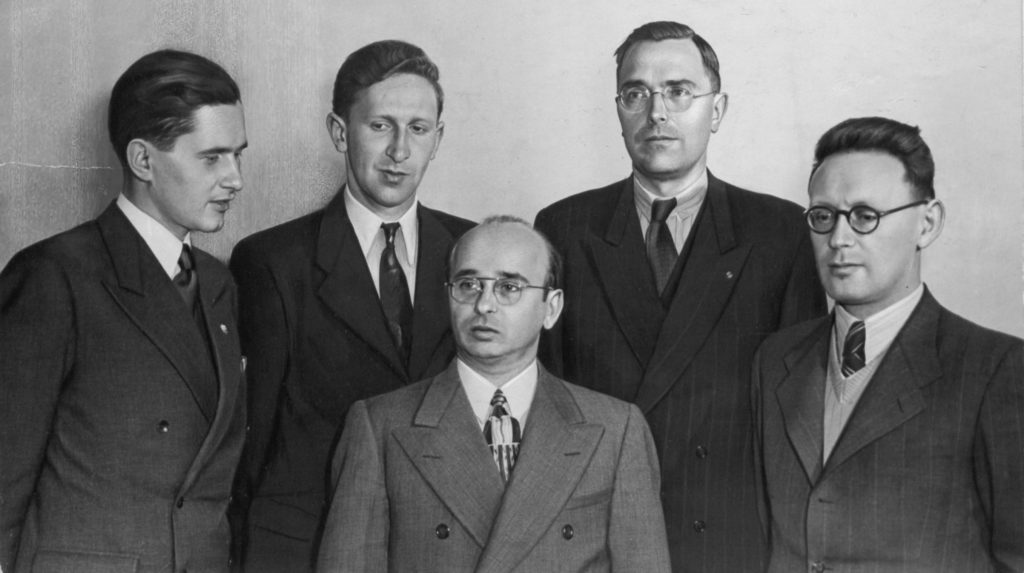
Vasily Smyslov
1957-1958

Smyslov had a long and illustrious career – from becoming the youngest Soviet Grandmaster, to setting a record for winning 17 Olympiad medals, to still playing world-class chess well into his 60s! Moreover, he dedicated 10 long years (1948-1958) to his quest to become the World Champion. His success as a player and eventual World Champion can be traced back to his upbringing in the Soviet era, under the Party’s regime, when chess had become widespread and integral in education. By the time of the 1948 World Championship Match Tournament, Smyslov was considered only second behind Botvinnik.
Often compared to Capablanca, Smyslov also had an intuitive feeling for chess. His approach was artistic in nature, which, along with solid endgame technique, saw him beat Botvinnik in their 1957 Match, therefore becoming the 7th World Champion.
In his book, The Life and Games of Vasily Smyslov, Andrey Terekhov presents this position from the Botvinnik-Smyslov World Championship match:
Can you find the key defensive idea here for Black?
Mikhail Tal
1960-1961

Now enters the “Magician from Riga”! Previous World Champions have so far been classified as “natural” “systematic” and “attacking”. However, the latter description took on a whole new meaning by Mikhail Tal, who pushed the boundaries of attacking chess so much so that arguably his name is considered synonymous with sacrificing in chess.
Although his time as World Champion was short-lived, he cemented his place as one of the greatest players of all time by winning multiple Soviet Championships, and Olympiad medals, and competing in multiple Candidates tournaments. At only 23 years old, Tal became the youngest World Champion (at the time), by beating the more strategic and sound Botvinnik 12.5-8.5. In Modern Chess: From Steinitz to the 21st Century, author Craig Pritchett writes that Tal “generally headed for highly complex positions that played to his rapid-fire calculating strengths”. Riddled with attack and sacrifices, many of which were not always sound, Tal’s play most definitely had a psychological impact on his opponents.
Tal wrote arguably one of the best accounts of a World Championship match in his book Tal Botvinnik 1960, which shares a detailed analysis of not only the games but the psychology of the match and everything in between.
Here is game 6 from the Tal-Botvinnik Match, considered to be one of the most exciting:
After 46…Kd4 Tal writes, “In this position, the game was adjourned and White sealed his move. Arriving home, my trainer and I set up the position and were quickly convinced that Black’s passed pawn was irresistible. Therefore (I am telling you secretly) on the next day we didn’t even eat breakfast, and we waited for the sound of the referee’s bell with information about White’s resignation. At noon, the long awaited bell sounded…White’s sealed move had been 47.Rd7+. But it made no difference – White had resigned.”
Tigran V. Petrosian
1963-1969
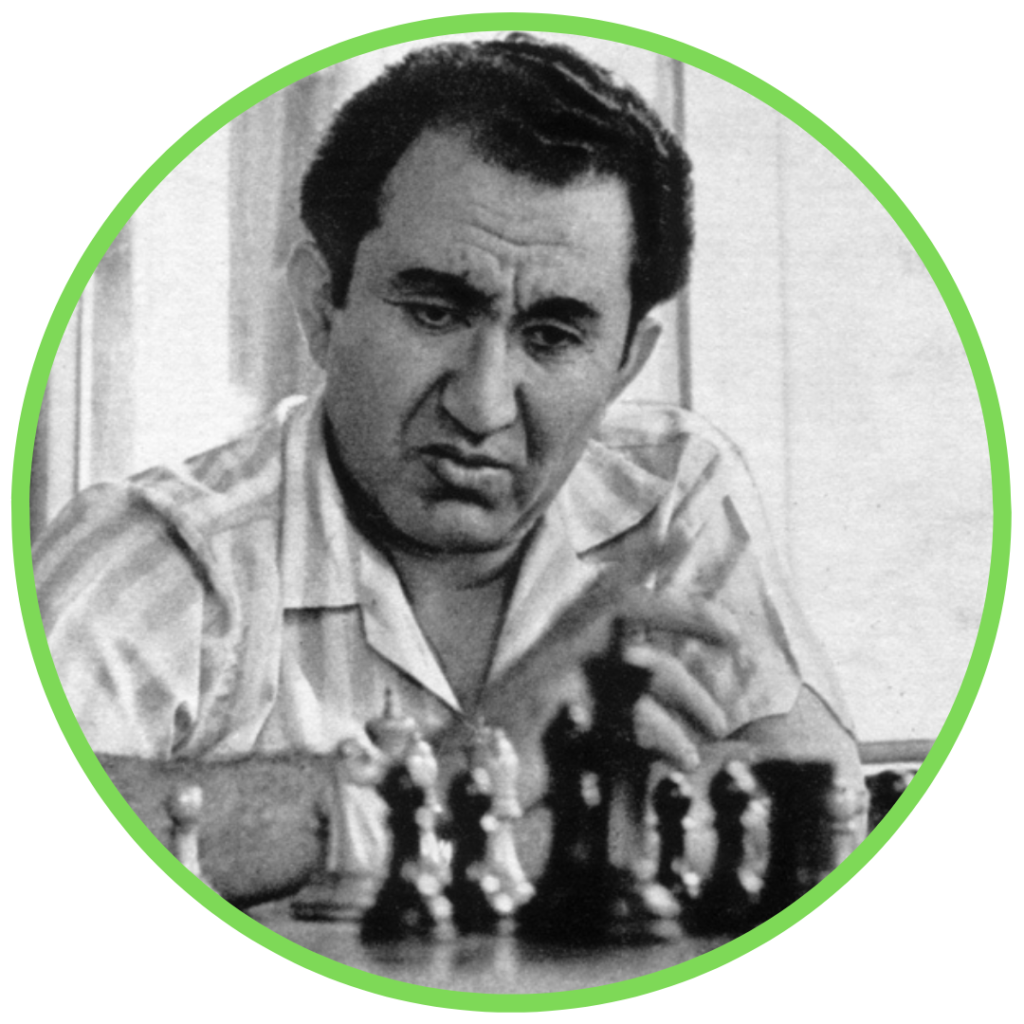
Tigran Petrosian, the “Iron Tigran”, was the ninth World Champion and brought a whole new element to World Championship chess – defense. If Tal is considered an attacking genius, then Petrosian can be considered a defensive one. His play was incredibly solid, guided by logic, and he would not allow his opponents to attack. Instead, his own attack would slowly but surely creep up on his opponents often including some kind of exchange sacrifice. His defensive prowess is evident in the fact that in 1962, he did not lose a single tournament game. It can be critiqued that this was only the result of many (short) draws, but it still remains that in the time of the dominating Botvinnik, Spassky, and aggressive Tal, Petrosian was able to bring a new style of playing to the table.
Even after losing the first game in the match, Petrosian handled his nerves and settled back on his feet. With positional openings and solid, defensive structures, he eventually beat Botvinnik in their 1963 match to become World Champion. Petrosian retained his title against Spassky in 1966 and held the throne until 1969.
Boris Spassky
1969-1972
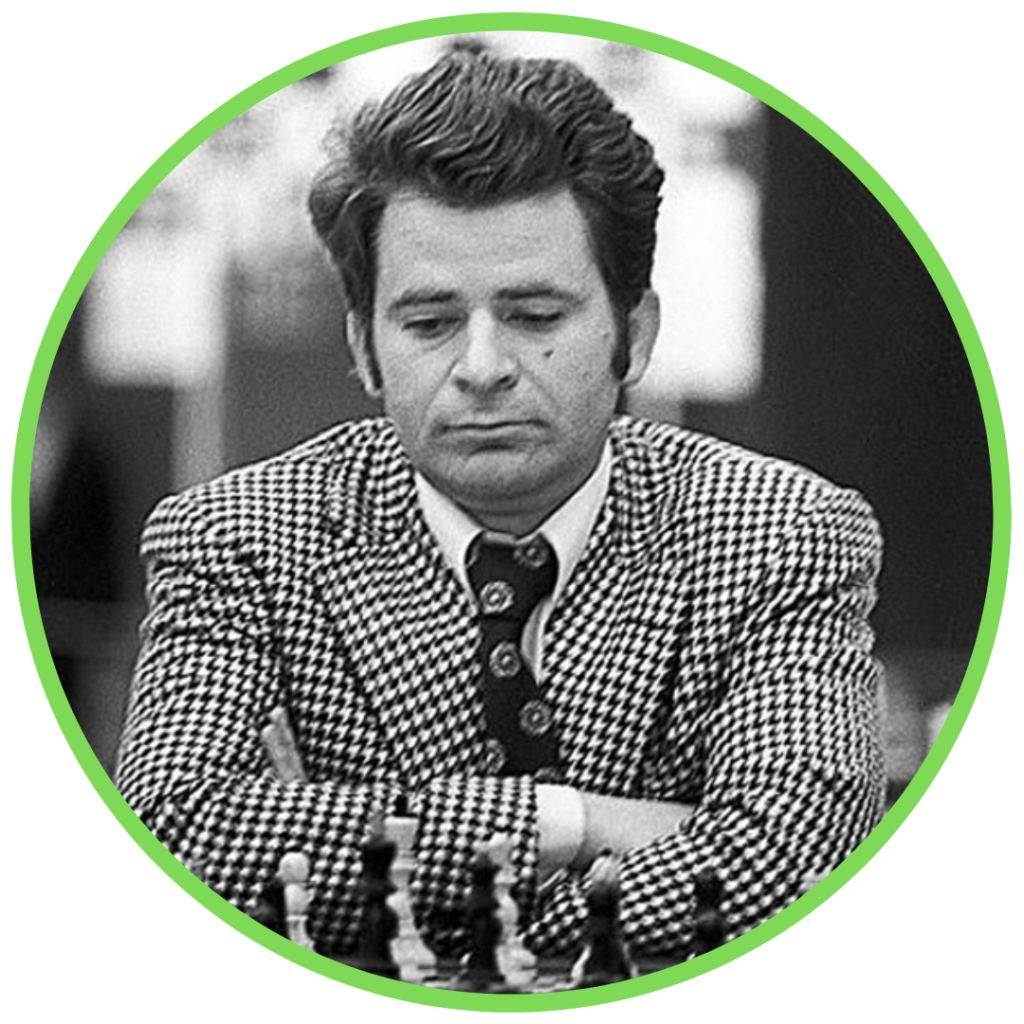
Boris Spassky was a player who was universally grounded – he understood sound strategy but also had a flair for the attack which made him dangerous (and comfortable) in almost any position. He played with risk, but when the time was right.
Chess was no longer an old gentleman’s game at this point, evident in the up-and-coming youth of the time, including Spassky who at the mere age of 18 years old played his first Candidates tournament in 1956 which would be the first of many. He would go on to triumph on the international chess field, eventually winning the 1965 Candidates tournament. Although he lost the 1966 title match to Petrosian, this did not dissuade his title hopes as he won the (somewhat controversial) 1968 Candidates match series, earning the right to challenge Petrosian once again which he did victoriously in 1969.
Here is a memorable win from Spassky over Fischer in their game at the Second Piatigorsky Cup in 1966:
Bobby Fischer
1972-1975
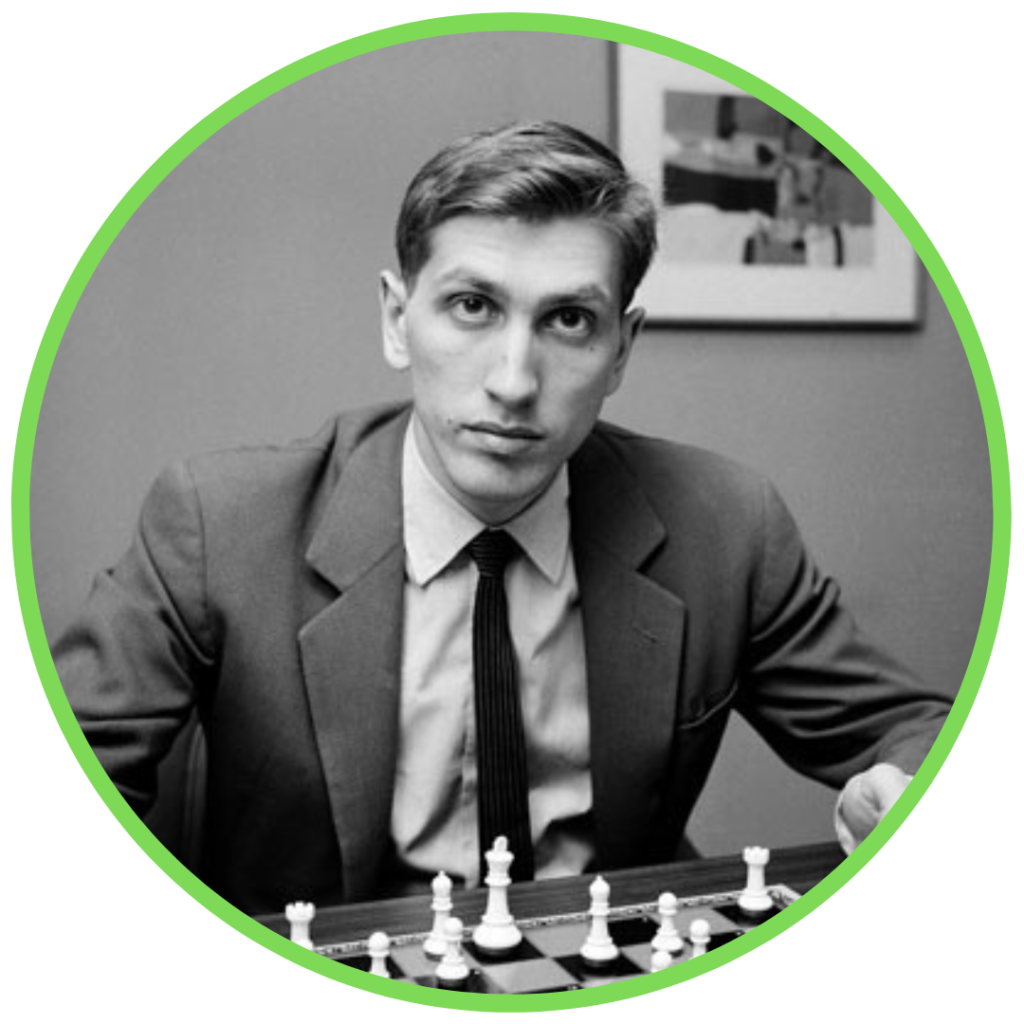
One cannot contest that the USSR dominated chess and the World title from Botvinnik in 1948 to Spassky in 1972 – a reign that was broken by the talented American Bobby Fischer. We could discuss the cultural and political significance of this in great detail, but that would require a whole new blog post.
As was becoming popular at the time, his talent was prevalent at a young age as he won multiple US chess championships – even attaining a perfect score in the 1963 edition. His rise to the top was a monumental one, as he crashed onto the international chess scene and dominated World Championship qualifying events. This is all the more impressive considering that Fischer lacked the resources and training that was readily available to the best Soviet players at the time.
His skills were apparent in all phases of the game – from opening preparation (influencing ideas still used today), brilliant middlegame combinations, to endgame technique. Fischer, who remains the best player in history to some, is known for many things. One of which is the game of the century:
Annotations from chessgames.com
His victory over Spassky in 1972 is considered to be one of the most famous World Championship matches, even referenced in popular culture through films and plays. It was not a straightforward organized event as problems persisted before and throughout for the young American. However, there was evidently mutual respect between the two greats, and after a rollercoaster event, against all odds, Fischer became the first (and only) World Champion from the US breaking a seemingly impenetrable Soviet dominance.
Featured Books
Have any thoughts or questions? Let us know in the comments below!
Part 1 Solutions:
Lasker
After 12…Rd8, White cannot play 13.Bxh7 because of 13…Kh8 14.Qe4 and Black has 14…Qh5! trapping the Bishop.
Capablanca
The stunning combination that results in a Capablanca mate: 22.Rh8+ Ke7 23.Re8+! Rxe8 24.Rxd7+ Kf8 25.Rxf7#
- Rock Solid Chess: Volume 2 - February 21, 2024
- Unsung Heroes of Chess - February 19, 2024
- Build Up Your Chess: The Fundamentals - February 7, 2024
